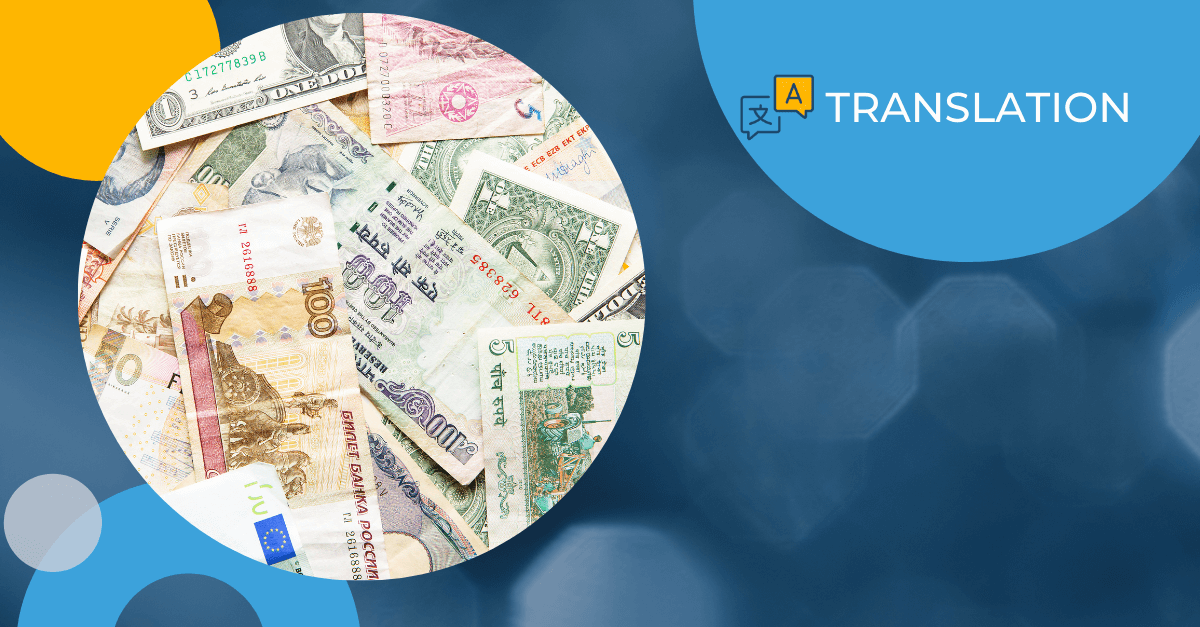Month: April 2017
Is Website Translation Proxy Right for You?

If you want to communicate with a global audience, strengthen your brand or market your product overseas, it’s critical that you translate your website and update the foreign-language versions as often as possible. This is easier said than done, especially if your website has many pages of content and needs to be translated into several languages. If this describes your situation, you should consider a Translation Proxy Service (TPS) to help you simplify the website translation process and manage the foreign-language versions of your website with greater ease.
What is translation proxy?
A translation proxy server is a dedicated computer or software system that acts as an intermediary between your original English website and the foreign-language versions of your website. The proxy works as a layer on top of the original website that dynamically swaps English content for the translated content that your end users need. Instead of localizing the content within your CMS (Content Management System), this content is pulled from translation memory stored in the TPS repository for your website. This system allows your end users to browse online content in their own language without you needing to re-translate every page. As long as the content has already been translated in the past, the translation proxy can fetch the content and make it available to your foreign visitors.
Is website translation proxy right for you?
TPS works best for translating mirror-image websites – i.e. those that don’t require significant changes in layout, style, colors, etc. For example, if your company is selling its products in the U.S. and China, the product configurations might differ by country – requiring two different versions of the same website page. Such a scenario isn’t ideal for TPS. TPS works best when the same content will be used in many regions. TPS mirrors your site’s structure and needs the same content for all the different languages you want to translate into.
What are the benefits of a TPS?
Assuming your web content doesn’t need to be adapted for specific regions around the globe, TPS has five key benefits to make your life easier:
- Reduced site administration – Since TPS crawls and extracts all your site’s content automatically, it saves a lot of effort for your site administrator. Other translation options may require your site admin to manually save or copy content to make it available for translation, and then manually copy or import back into your site. Factor this across multiple languages and the whole process can become difficult and time-consuming to manage.
- Automatic change detection – A big part of site administration is managing updates. Even with a highly robust Content Management System (CMS), it still requires a lot of effort to get content changes entered and deployed in just your original (English language) site. TPS can manage changes automatically, since it is based on a system that scans your site. A capable TPS system can detect changes on a page as well as the addition and deletion of other pages.
- Simplified translation workflow – Related to automatic change detection is the ability to easily process translation updates using TPS. Most TPS systems offer a turn-key way to process translation updates by utilizing human translators, machine translation or a combination of both. If any system requires you to touch translated content to publish it, look elsewhere!
- Minimal hosting cost – This is an aspect of TPS that may vary by provider. Customized systems that you need to deploy on your infrastructure can be quite expensive to install and configure, and may even require additional servers and storage space. Cloud-based TPS systems do exist. Those that utilize well-established architecture, such as Google AppEdge servers, carry a much lower cost, which is tied to how much content you are hosting in the TPS and how many page views you get per month on the stored pages. This kind of metered option is ideal, since you only pay for what you use.
- Benefits of a Content Delivery Network – Another feature of some TPS systems is Content Delivery Networks (CDN) to deliver your content over the web. A CDN is a network of proxy servers that ensure faster delivery of content by caching copies of a site’s contents on multiple servers closer to the users accessing that content. This content delivery strategy provides a better user experience and it builds redundancy into the system, so that if one server goes down another can still deliver the content.
Optimizing your website
Hopefully this article has provided a good basis to help you decide if TPS is the right technology for your company’s multilingual website. TPS can help simplify the website translation process and streamline the creation and management of foreign-language versions of your site.
If you would like to learn more about whether a translation proxy solution is right for you, contact us today.
Get the latest insights delivered to your inbox
4 Translation Errors that Cost Millions

Inaccurate translations can be very costly. In the best-case scenario, a translation error is caught and only requires correction. In the worst-case scenario, errors can expose you to financial liability, disputes or even lawsuits.
Getting translations performed by the cheapest vendor is a common rookie mistake. Errors produced by low-cost translation services can prove far more expensive in the long run. The four examples below demonstrate the potentially high-priced consequences of imprecise or unreliable translations.
1. Malpractice settlement awarded to quadriplegic (Price tag: $71 million)
Eighteen-year-old Willie Ramirez became a quadriplegic due to a hospital misdiagnosis. The settlement resulted from the mistranslation of a single word.
Ramirez was brought to the hospital in a comatose state by his family. The Spanish-speaking family explained they believed he was experiencing a reaction to food poisoning, using the word ‘intoxicado’ to explain that he was poisoned. In Spanish, the word refers to anything ingested that makes a person sick. The interpreter, however, translated the word as intoxicated. Doctors treated him for a drug overdose, overlooking the real problem – bleeding in the brain that continued for days, resulting in his complete paralysis.
2. Sharp backtracks on faulty translation (Price Tag: Stock fell by 10%)
Announcing net losses usually hurts your stock price, but when Sharp, the Japanese electronics giant, warned in a statement about its own negative cash flow, a translation into English sounded the alarms much louder than the company intended.
While the original Japanese statement asserted confidence in the company’s future despite the losses, the English version of the statement declared that the company’s brain trust held “material doubt” about its future as a going concern. The corrected statement, issued a few days later, made it clear that the company had “no uncertainties” about its ability to continue. Unfortunately, the damage was already done. Sharp’s stock fell by 10% before rebounding a few days later.
3. Spanish packaging error results in costly food recall (Price Tag: approx. $10 million)
Mead Johnson was forced to recall 4.6 million cans of baby formula in 2001 because Spanish language instructions on the side of the packages were wrong. The incorrect mixture of powder and water was dangerous and could lead to seizures, an irregular heartbeat and even death in infants. The product had to be recalled immediately.
The recall was enacted quickly enough to prevent liability, but the scale of the preventative action came at the cost of a significant recall – setting Mead Johnson back, at a minimum, $10 million in direct costs (including retrieval, storage and destruction of the recalled product) plus the unquantifiable costs of a damaged reputation and lost future sales.
4. Imprecise translation leads to huge award (Price tag: $1.76 billion)
A tribunal hearing the case of Occidental Petroleum Corporation vs Ecuador ruled against Ecuador, awarding the petroleum company nearly $2 billion. The Ecuadorian representative claimed the huge award would have been significantly lower had the tribunal had access to better translations of Ecuadorian Supreme Court judgments and documents.
Initially, Occidental had reached an agreement with Ecuador to explore regions near the Amazon for oil. The tribunal’s judgment determined that Occidental breached its agreement with Ecuador by not soliciting approval from the participants of their farmout agreement. But terminating the initial agreement was deemed to be disproportional, resulting in an enormous award to Occidental.
In a dissenting opinion, Ecuadorian representative Professor Brigitte Stern blamed poor translation for the unparalleled monetary sum. “Had the translations…been correct and the original Spanish texts been really taken into account, the conclusions arrived at by the majority would have been impossible to sustain,” she wrote (paragraph 78).
Spend at the beginning, not the end
Each of the abovementioned, high-priced consequences could have been avoided had the initial translations been obtained and prepared properly. Ultimately, the price of failing to produce quality translations is significantly steeper than performing the translations appropriately at the outset.
The best way to prevent costly translation errors is to have your documents translated by a professional, vetted translator or language service provider (LSP). This ensures that documents are prepared accurately and will be able to withstand thorough review. Remember, while high-quality translation services may be more expensive, they are still far less expensive than translation errors that can literally cost you millions.
We Can Help
Morningside equips the world’s leading organizations with accurate, high-quality, professional translation services. We specialize in highly regulated industries, including legal, life sciences, corporate compliance and IP. We help your ideas reach new markets and audiences while allowing you to do more with your budget. Our global network of 8,000+ vetted translators includes subject matter experts (SMEs) in various technical fields and practice areas. Morningside is supported by industry-leading technology and a quality management system certified to the latest ISO 9001, 13485 and 17100 standards. We translate complex materials into 200+ languages for Global 500 companies, international law firms, and regulatory bodies.
Get the latest insights delivered to your inbox
6 Tips for Communicating With Patients

The number of non-native English speakers in the United States now includes over 60 million people – nearly triple the number from just three decades ago. Spanish and Chinese are the most popular foreign languages spoken in U.S. homes. With roughly one-in-five Americans speaking another language at home, medical professionals are bound to encounter patients with whom it is difficult to communicate. Employing a medical interpreter is vital for situations like this, but it’s not just the interpreter who matters.
You can play an active role in helping to make your non-English speaking patients more comfortable by following these six tips:
1. Learn a few polite expressions
A simple ‘good morning’ or ‘thank you’ in the patient’s native language will go a long way toward improving your relationship and building trust. Having a medical interpreter on your staff will help ensure you are able to connect with your patients immediately.
2. Avoid slang
Use standard English to make sure your explanations and instructions will be understood correctly. For times when you don’t have your medical interpreter on hand, avoiding slang will allow you to speak more clearly and concisely.
3. Keep it simple
As with may have, the shorter the explanation, the better. Aim for words and phrases that are simple to understand and easily translated. Long explanations could lead the medical interpreter to summarize your words in a way that doesn’t fully express what you’re trying to say. At the same time, be careful not to patronize your patient!
4. Speak in full sentences
You may think it’s helpful to stop mid-sentence to allow the medical interpreter to catch up, but doing so may put information out of context and lead to a confusing or inaccurate oral translation.
5. Be culturally sensitive
Topics such as death, sexuality and women’s health must be addressed with care and respect, even with a medical interpreter present. Also, be careful about making jokes that might not translate well (or appropriately) into your patient’s native language.
6. Look at the medical interpreter
It’s very important to stay engaged while the medical interpreter is translating your words. Don’t look through charts, talk to others in the room or stare out the window. Instead, signal your interest by facing the interpreter while they’re talking.
About Us
At Morningside, we’ve been providing high-quality medical translation services for over 20 years, and we have obtained all three of the critical ISO certifications described above. Our quality assurance process includes many layers of controls, including editing and proofing with built-in redundancies. To learn more about our high-quality translations, contact us today.
Get the latest insights delivered to your inbox
How to Keep Your Global Workforce Engaged

If you are a multinational company with a global workforce, translating HR documents like employee handbooks and codes of conduct is a must. Documents related to the onboarding process should be translated professionally to ensure they will be clearly understood by overseas employees. In fact, many countries legally require that important HR communications be translated into the local language of employees.
But translating onboarding and training documents is only the beginning. Building a cohesive global workforce requires reaching out and engaging employees wherever they are located, throughout their employment. Translating internal communications is a critical part of that process.
What to translate
Internal communications can include letters from the CEO, newsletters, social media and any other information that keeps employees up-to-date and informed on what is happening at the company. These documents help employees understand the company’s mission, core values and culture. If you are sending internal communications to your global employees in English only, it’s likely they won’t get the message. Even if they speak English, they are far more likely to read and understand communications in their native language.
Employee engagement
Professionally translating newsletters, corporate videos and other internal materials into local languages will help overseas employees feel valued within your organization, and hence engaged. High employee engagement not only helps improve performance – it’s also good for the bottom line. A Gallup study found that companies with high employee engagement levels have 3.9 times the earnings per share (EPS) growth rate compared to those in the same industry with lower levels of employee engagement.
Internal marketing & customer satisfaction
Internal marketing focuses on motivating employees to provide great customer service and stay “on-message” with the company’s sales and marketing efforts. It recognizes that employees play a critical role in the client retention process, because customer satisfaction is based on the entire experience of interacting with a company, not just with its sales and customer service teams. Even staff who don’t interact directly with customers help ensure customer satisfaction, including overseas employees.
Global brand management
Another benefit related to internal marketing is global branding. If you want customers to value you, maintaining a strong brand is critical. Overseas employees can make great brand ambassadors – if they know the brand. You can improve their brand awareness by translating and sharing social media, marketing and sales collateral, taglines, and other branded content. Your global employees can help generate buzz and serve as a credible source for information about your company, especially in target markets where customers may be less familiar with your products and services.
Doing it right is worth the cost
Keeping a diverse workforce engaged is no easy task, especially if you are operating in multiple global locations. Translating internal communication is critical to this effort – but it has to be done right. Make sure that all communications and HR documents are professionally translated and localized. Your global employees will appreciate it, and the return on investment will make it well worth the cost.

